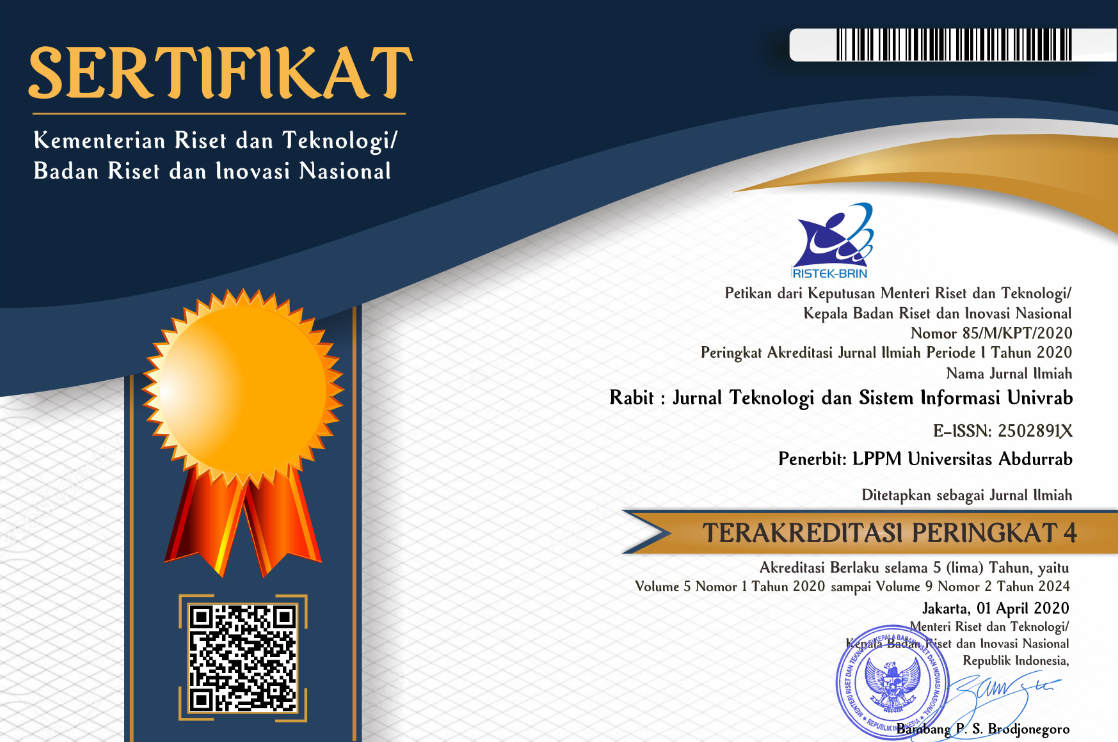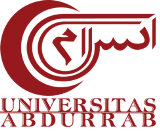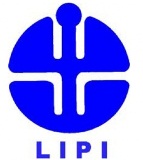IMPLEMENTASI K-MEANS CLUSTERING PADA DATA PENGELOMPOKAN PENDAFTARAN MAHASISWA BARU (STUDI KASUS UNIVERSITAS ABDURRAB)
Abstract
Facing the complex dynamics of freshman enrollment, the k-means clustering method was introduced as the main approach. The focus is on Abdurrab University, where various attributes of prospective students are investigated, including gender, parental education, parental income, hometown, province, age, and choice of study program. With the k-means clustering algorithm, the purpose of the study is to uncover the underlying patterns of preferences and characteristics of new student groups. The results of this study provide in-depth insight into the factors that influence the decision to admit new students in the campus environment of Abdurrab University. In this study Davies-Bouldin Index (DBI) was used as a method to determine the optimal number of clusters, the lowest DBI value was 1.5 which occurred in 8 clusters. This shows that 8 clusters is the optimal number of clusters for data that has been transformed and is ready for k-means clustering. After carrying out the clustering process with the K-Means method which involves the formation of 8 clusters, to show patterns and insights from the clustering results, there are two ways used in this study, first make a heatmap of the correlation of features displayed, information can be obtained about the relationship between variables. The correlation value ranges from -0.4 to 1.0 where positive values indicate a positive correlation and negative values indicate a negative correlation. A positive correlation means that if the value of one variable increases, then the value of the other variable also tends to increase. Conversely, negative correlation means that if the value of one variable increases, then the value of the other variable tends to decrease.
References
M. Arhami and M. Nasir, Data Mining - Algoritma dan Implementasi. Penerbit Andi, 2020. [Online]. Available: https://books.google.co.id/books?hl=id&lr=&id=AtcCEAAAQBAJ&oi=fnd&pg=PP1&dq=ARHAMI+NASIR&ots=hDhlOM5Wr8&sig=jqLWHIAwU9vMbVwAEHH9hbxJKj8&redir_esc=y#v=onepage&q=ARHAMI NASIR&f=false
R. K. Dinata, S. Safwandi, N. Hasdyna, and N. Azizah, “Analisis K-Means Clustering pada Data Sepeda Motor,” INFORMAL Informatics J., vol. 5, no. 1, p. 10, 2020, doi: 10.19184/isj.v5i1.17071.
S. Aulia, “Klasterisasi Pola Penjualan Pestisida Menggunakan Metode K-Means Clustering (Studi Kasus Di Toko Juanda Tani Kecamatan Hutabayu Raja),” Djtechno J. Teknol. Inf., vol. 1, no. 1, pp. 1–5, 2021, doi: 10.46576/djtechno.v1i1.964.
A. Muhartini, O. Sahroni, S. Rahmawati, Dwi, T. Febrianti, and I. Mahuda, “ANALISIS PERAMALAN JUMLAH PENERIMAAN MAHASISWA BARU DENGAN MENGGUNAKAN METODE REGRESI LINEAR SEDERHANA Ajeng,” J. Bayesian J. Ilm. Stat. dan Ekon., vol. 1, 2021, doi: 10.30604/jika.v7i2.1507.
L. Lathifah, “Penerapan Enterprise Architecture pada Penerimaan Mahasiswa Baru menggunakan TOGAF di Universitas X Palembang,” JATISI (Jurnal Tek. Inform. dan Sist. Informasi), vol. 7, no. 3, pp. 647–655, 2020, doi: 10.35957/jatisi.v7i3.565.
D. Dona and M. Rifqi, “Penerapan Metode K-Means Clustering Untuk Menentukan Status Gizi Baik Dan Gizi Buruk Pada Balita (Studi Kasus Kabupaten Rokan Hulu),” Rabit J. Teknol. dan Sist. Inf. Univrab, vol. 7, no. 2, pp. 179–191, 2022, doi: 10.36341/rabit.v7i2.2171.
E. Ramadanti and M. Muslih, “Penerapan Data Mining Algoritma K-Means Clustering Pada Populasi Ayam Petelur Di Indonesia,” 2022 doi: 10.36341/rabit.v7i1.2155.
N. Sunanto and G. Falah, “Penerapan Algoritma C4.5 Untuk Membuat Model Prediksi Pasien Yang Mengidap Penyakit Diabetes,” Rabit J. Teknol. dan Sist. Inf. Univrab, vol. 7, no. 2, pp. 208–216, 2022, doi: 10.36341/rabit.v7i2.2435.
“UNDANG UNDANG REPUBLIK INDONESIA NOMOR 20 TAHUN 2003 TENTANG SISTEM PENDIDIKAN NASIONAL.” 2003.
E. Buulolo, Data Mining Untuk Perguruan Tinggi. Sleman: CV BUDI UTAMA, 2020. [Online]. Available: https://books.google.co.id/books?hl=id&lr=&id=-K_SDwAAQBAJ&oi=fnd&pg=PP1&dq=Buulolo+2020&ots=Kezq5Rx3Qk&sig=O70NsVBl38e-bhW-3r7uQB-0EHU&redir_esc=y#v=onepage&q=Buulolo 2020&f=false
I. Nuryani and D. Darwis, “Analisis Clustering Pada Pengguna Brand Hp Menggunakan Metode K-Means,” Pros. Semin. Nas. Ilmu Komput., vol. 1, no. 1, p. 2021, 2021.
A. Sulistiyawati and E. Supriyanto, “Implementasi Algoritma K-means Clustring dalam Penetuan Siswa Kelas Unggulan,” J. Tekno Kompak, vol. 15, no. 2, p. 25, 2021, doi: 10.33365/jtk.v15i2.1162.
F. Yunita, “Penerapan Data Mining Menggunkan Algoritma K-Means Clustring Pada Penerimaan Mahasiswa Baru,” Sistemasi, vol. 7, no. 3, p. 238, 2018, doi: 10.32520/stmsi.v7i3.388.
W. Gie and D. Jollyta, “Perbandingan Euclidean dan Manhattan Untuk Optimasi Cluster Menggunakan Davies Bouldin Index: Status Covid-19 Wilayah Riau,” Pros. Semin. Nas. Ris. Dan Inf. Sci., vol. 2, no. April, pp. 187–191, 2020.
E. Muningsih, I. Maryani, and V. R. Handayani, “Penerapan Metode K-Means dan Optimasi Jumlah Cluster dengan Index Davies Bouldin untuk Clustering Propinsi Berdasarkan Potensi Desa,” J. Sains dan Manaj., vol. 9, no. 1, p. 96, 2021, [Online]. Available: www.bps.go.id
Copyright (c) 2024 Rabit : Jurnal Teknologi dan Sistem Informasi Univrab

This work is licensed under a Creative Commons Attribution-NonCommercial-ShareAlike 4.0 International License.
Copyright Notice
The copyright of the received article shall be assigned to the publisher of the journal. The intended copyright includes the right to publish the article in various forms (including reprints). The journal maintains the publishing rights to published articles. Therefore, the author must submit a statement of the Copyright Transfer Agreement.*)
This work is licensed under a Creative Commons Attribution-NonCommercial-ShareAlike 4.0 International License.
In line with the license, authors and any users (readers and other researchers) are allowed to share and adapt the material only for non-commercial purposes. In addition, the material must be given appropriate credit, provided with a link to the license, and indicated if changes were made. If authors remix, transform or build upon the material, authors must distribute their contributions under the same license as the original.
Please find the rights and licenses in RABIT : Jurnal Teknologi dan Sistem Informasi Univrab. By submitting the article/manuscript of the article, the author(s) accept this policy.
1. License
The non-commercial use of the article will be governed by the Creative Commons Attribution license as currently displayed on Creative Commons Attribution-NonCommercial-ShareAlike 4.0 International License.
2. Author’s Warranties
The author warrants that the article is original, written by stated author(s), has not been published before, contains no unlawful statements, does not infringe the rights of others, is subject to copyright that is vested exclusively in the author and free of any third party rights, and that any necessary written permissions to quote from other sources have been obtained by the author(s).
3. User Rights
RABIT's spirit is to disseminate articles published are as free as possible. Under the Creative Commons license, RABIT permits users to copy, distribute, display, and perform the work for non-commercial purposes only. Users will also need to attribute authors and RABIT on distributing works in the journal.
4. Rights of Authors
Authors retain all their rights to the published works, such as (but not limited to) the following rights;
- Copyright and other proprietary rights relating to the article, such as patent rights,
- The right to use the substance of the article in own future works, including lectures and books,
- The right to reproduce the article for own purposes,
- The right to self-archive the article,
- The right to enter into separate, additional contractual arrangements for the non-exclusive distribution of the article's published version (e.g., post it to an institutional repository or publish it in a book), with an acknowledgment of its initial publication in this journal (RABIT : Jurnal Teknologi dan Sistem Informasi Univrab).
5. Co-Authorship
If the article was jointly prepared by other authors, any authors submitting the manuscript warrants that he/she has been authorized by all co-authors to be agreed on this copyright and license notice (agreement) on their behalf, and agrees to inform his/her co-authors of the terms of this policy. RABIT will not be held liable for anything that may arise due to the author(s) internal dispute. RABIT will only communicate with the corresponding author.
6. Royalties
This agreement entitles the author to no royalties or other fees. To such extent as legally permissible, the author waives his or her right to collect royalties relative to the article in respect of any use of the article by RABIT.
7. Miscellaneous
RABIT will publish the article (or have it published) in the journal if the article’s editorial process is successfully completed. RABIT's editors may modify the article to a style of punctuation, spelling, capitalization, referencing and usage that deems appropriate. The author acknowledges that the article may be published so that it will be publicly accessible and such access will be free of charge for the readers as mentioned in point 3.
 PDF (Bahasa Indonesia)
PDF (Bahasa Indonesia)
 Abstract views: 60
Abstract views: 60
 downloads: 52
downloads: 52

 :
:












